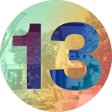
Episode 3 – teamLab Phenomena Abu Dhabi and NYUAD + Earth Duet by E.M. Lewis
In this episode, Ian and Vanesa take you on the next stage of their UAE adventure! After World Stage Design 2025 in Sharjah, Ian delivered a talk at NYU Abu Dhabi, exploring “Somewhere in Time: Ghosts, People, Sites, and Signals.”
Together they reflect on Ian's presentation, touring the university’s incredible Red Theater, Blue Hall, and Black Box, and engaging with the curiosity around sustainable, hybrid, and ecological design.
Plus, they share their experience at TeamLab Phenomena Abu Dhabi, a 17,000 m² immersive art space where light, water, sound, and motion respond to your presence whilst sparking ideas about participation, performance, and the future of stage design.
All this as well as bringing you the reading of their weekly CCTA play. This week you heard Earth Duet, by E.M. Lewis.

